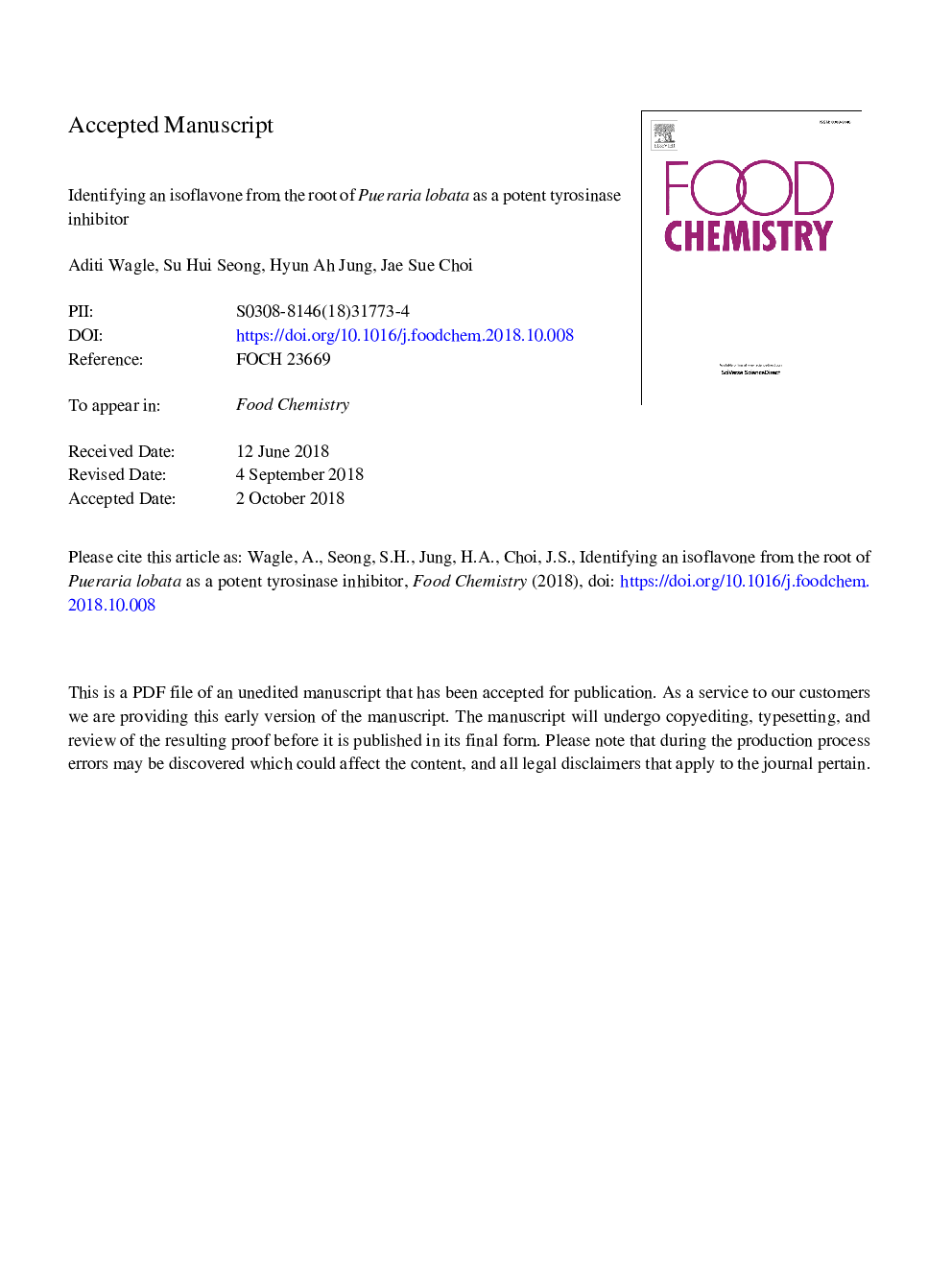| Article ID | Journal | Published Year | Pages | File Type |
|---|---|---|---|---|
| 11262966 | Food Chemistry | 2019 | 11 Pages |
Abstract
Traditionally, the root of Pueraria lobata are widely used as a functional food. It was observed that a 70% ethanol extract showed a dose-dependent inhibition towards mushroom tyrosinase. Among the different isolated compounds, calycosin demonstrated potent inhibitory activity against substrates l-tyrosine and l-DOPA, with IC50 of 1.45â¯Â±â¯0.03 and 7.02â¯Â±â¯0.46â¯ÂµM, respectively. Conversely, formononetin and daidzein exhibit weak inhibition. Moreover, kinetic studies revealed calycosin to be a competitive inhibitor for both substrates. Additionally, molecular docking simulation showed that the hydroxyl groups at C-3â² and C-7 positions interacted with the catalytic site and peripheral residues, demonstrating a higher affinity toward mushroom tyrosinase. Accordingly, our results suggest that, rather than a mono-substituted hydroxyl or methoxyl group, the presence of a hydroxyl group at C-3â² and a methoxyl group at C-4â² position of the isoflavone skeleton plays an essential role in the manifestation of anti-browning activity in food products.
Related Topics
Physical Sciences and Engineering
Chemistry
Analytical Chemistry
Authors
Aditi Wagle, Su Hui Seong, Hyun Ah Jung, Jae Sue Choi,
